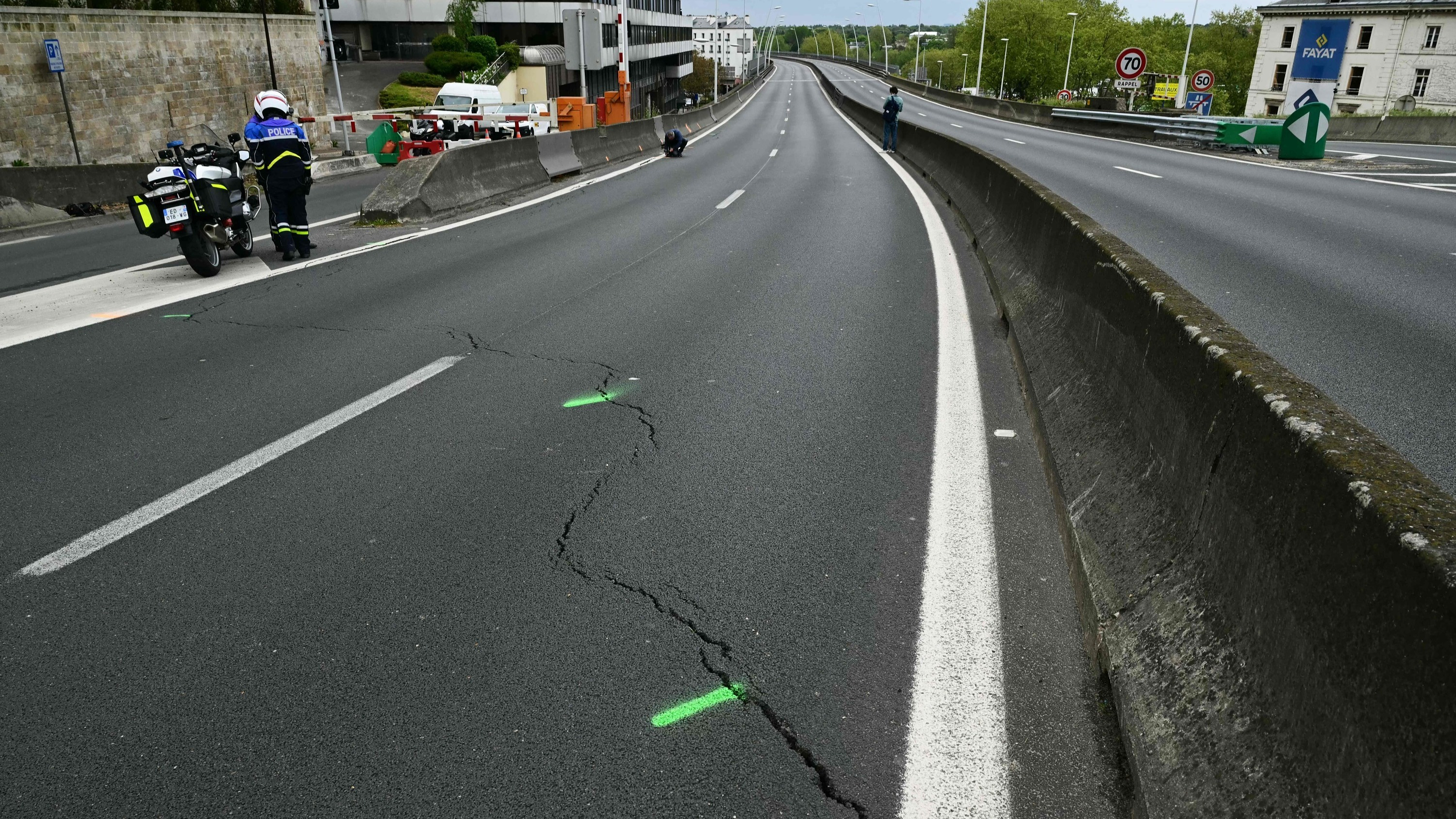The case was bristling with columns plated with gold leaf and sumptuous marble ornaments. Nothing less was needed to exalt the pride of an artist. Or an emperor. The archaeological authorities of Rome announced on July 26 that they had found the luxurious remains of Nero's theater. Well known by historical sources, this long coveted public monument has escaped the sagacity and tools of researchers for several centuries. He rested five meters below the courtyard of the Palazzo della Rovere, a splendid 15th century building with a caramel facade, located along Via della Conciliazione, the main artery that connects St. Peter's Square to Castel Sant'Angelo.
"This is a discovery of exceptional importance which testifies to the place where Nero rehearsed his poetry and song performances", rejoiced in a press release Daniela Porro, head of the Special Superintendency for the Archaeological Assets of Rome - the public body in charge of excavations in the Italian capital. His team presented to the press the various structures partially unearthed in the greatest secrecy since 2020, including the cavea - the semicircular tiers of the Roman theater. Collapsed columns as well as painted walls and brick facing arranged in places in opus reticulatum, characterized here by polychrome rubble stones in fishing net, completed the whole.
"The structures were provided with precious and refined coatings, so sumptuous that it should very likely be a building financed with imperial funds", indicated the scientific manager of the preventive excavation, Alessio De Cristofaro, to the Roman daily. He Messenger. The edifice spanned more than 42 meters in diameter, according to estimates by archaeologists, who were able to date the site to the middle of the 1st century AD, somewhere under the reigns of Caligula (37-41), Claudius (41-54) and Nero (54-68). According to Alessio De Cristofaro, however, several exuberances of the decor point to the Neronian period, such as a two-faced head sculpted in the effigy not of Janus, the two-faced Roman god, but of the Greek deities Zeus and Dionysos.
Like the Domus Aurea and the Neronian Colossus - a monumental statue erected on the current site of the Colosseum - two emblematic monuments of the reign of Nero, the sumptuous theater had drawn the wrath of Roman historians such as Suetonius and Dio Cassius. "In order to exalt the imperial power, luxury had reached such levels that Pliny the Elder exclaimed, scandalized: "In Rome, we dismantle the mountains to build palaces!", tells our Italian colleagues Marzia Di Mento, the director of the dig.
In Antiquity, Nero's taste for the lyrical arts, and for the lyre in particular, was known and often misused by Roman historians, many of whom maintained a dark legend around the last emperor of the Julio-Claudian dynasty. Thus, on the day of the great fire of Rome, in 64, Nero seemed to be precisely at his theater, according to the rumor peddled in the streets of the city. "The rumor had spread that at the very moment when Rome was in flames, the prince had gone up to his personal theater and had sung of the ruin of Troy, equating the present evils with the disasters of yesteryear," says Livy. .
However, Nero's theater had not been set up in the heart of Rome, but on the western margins of the city, in the Vatican plain. It stood near the circus built by Caligula on the estate given to his mother, Agrippina the Elder. The hypothetical lineaments of this building dedicated to chariot races, and where the apostle Peter would have died, are among the additional structures brought to light by archaeologists during their three years of excavation. The researchers also said that they had unearthed a large collection of small furniture, several hundred pieces including fine ceramic jugs, early Christian bronze pendants and glassware from the medieval period, extremely rare in Rome.
At the end of the multi-year study which is now looming, the various objects taken from the site will be presented in Roman museums. As for the ancient site, it will be reburied in order to be better preserved for future generations and not to spoil the partial redevelopment project of the Palazzo della Rovere into a luxury Four Seasons hotel. Supposed to open in 2025 in a wing of the palace, the establishment will present a fountain garden in the courtyard at the theater of Nero.

 In Russia, Vladimir Putin stigmatizes “Western elites”
In Russia, Vladimir Putin stigmatizes “Western elites” Body warns BBVA that "the Government has the last word" in the takeover bid for Sabadell
Body warns BBVA that "the Government has the last word" in the takeover bid for Sabadell Finding yourself face to face with a man or a bear? The debate that shakes up social networks
Finding yourself face to face with a man or a bear? The debate that shakes up social networks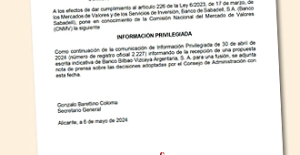 Sabadell rejects the merger with BBVA and will fight to remain alone
Sabadell rejects the merger with BBVA and will fight to remain alone The presence of blood in the urine, a warning sign of bladder cancer
The presence of blood in the urine, a warning sign of bladder cancer A baby whose mother smoked during pregnancy will age more quickly
A baby whose mother smoked during pregnancy will age more quickly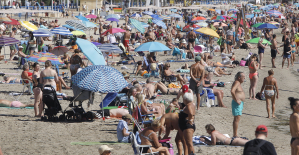 The euro zone economy grows in April at its best pace in almost a year but inflationary pressure increases
The euro zone economy grows in April at its best pace in almost a year but inflationary pressure increases Children born thanks to PMA do not have more cancers than others
Children born thanks to PMA do not have more cancers than others Apple alienates artists with the ad for its new iPad praising AI
Apple alienates artists with the ad for its new iPad praising AI Duration, compensation, entry into force... Emmanuel Macron specifies the contours of future birth leave
Duration, compensation, entry into force... Emmanuel Macron specifies the contours of future birth leave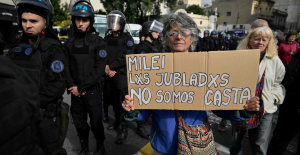 Argentina: the street once again raises its voice against President Javier Milei
Argentina: the street once again raises its voice against President Javier Milei Spain: BBVA bank announces a hostile takeover bid for its competitor Sabadell
Spain: BBVA bank announces a hostile takeover bid for its competitor Sabadell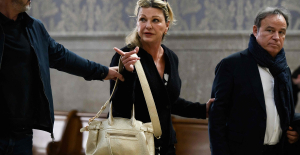 Berry affair: Jeane Manson victim of a heart problem after a court hearing
Berry affair: Jeane Manson victim of a heart problem after a court hearing Venice Film Festival: Isabelle Huppert will chair the jury of the 81st festival
Venice Film Festival: Isabelle Huppert will chair the jury of the 81st festival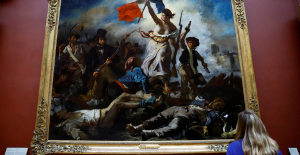 Louvre: Delacroix’s “Liberty Leading the People” target of the Riposte Alimentaire collective
Louvre: Delacroix’s “Liberty Leading the People” target of the Riposte Alimentaire collective The Coubertin Spirit, Eternal Memory, Planet of the Apes... Films to watch this week
The Coubertin Spirit, Eternal Memory, Planet of the Apes... Films to watch this week Omoda 7, another Chinese car that could be manufactured in Spain
Omoda 7, another Chinese car that could be manufactured in Spain BYD chooses CA Auto Bank as financial partner in Spain
BYD chooses CA Auto Bank as financial partner in Spain Tesla and Baidu sign key agreement to boost development of autonomous driving
Tesla and Baidu sign key agreement to boost development of autonomous driving Skoda Kodiaq 2024: a 'beast' plug-in hybrid SUV
Skoda Kodiaq 2024: a 'beast' plug-in hybrid SUV The home mortgage firm rises 3.8% in February and the average interest moderates to 3.33%
The home mortgage firm rises 3.8% in February and the average interest moderates to 3.33% This is how housing prices have changed in Spain in the last decade
This is how housing prices have changed in Spain in the last decade The home mortgage firm drops 10% in January and interest soars to 3.46%
The home mortgage firm drops 10% in January and interest soars to 3.46% The jewel of the Rocío de Nagüeles urbanization: a dream villa in Marbella
The jewel of the Rocío de Nagüeles urbanization: a dream villa in Marbella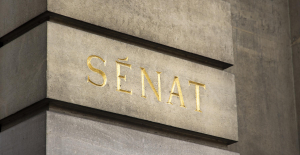 Institutions: senators want to restore the accumulation of mandates and put an end to the automatic presence of ex-presidents on the Constitutional Council
Institutions: senators want to restore the accumulation of mandates and put an end to the automatic presence of ex-presidents on the Constitutional Council Europeans: David Lisnard expresses his “essential and vital” support for François-Xavier Bellamy
Europeans: David Lisnard expresses his “essential and vital” support for François-Xavier Bellamy Facing Jordan Bardella, the popularity match turns to Gabriel Attal’s advantage
Facing Jordan Bardella, the popularity match turns to Gabriel Attal’s advantage Europeans: a senior official on the National Rally list
Europeans: a senior official on the National Rally list These French cities that will boycott the World Cup in Qatar
These French cities that will boycott the World Cup in Qatar Top 14: Josua Tuisova, the expected return of “The Animal”
Top 14: Josua Tuisova, the expected return of “The Animal” Tour of Italy: Alaphilippe beaten in the sprint by Pelayo Sanchez during the 6th stage of the Giro
Tour of Italy: Alaphilippe beaten in the sprint by Pelayo Sanchez during the 6th stage of the Giro Paris 2024 Olympic Games: in video, one of the survivors of the Marseille roundup carried the Olympic flame
Paris 2024 Olympic Games: in video, one of the survivors of the Marseille roundup carried the Olympic flame Table tennis: Félix Lebrun out in the quarterfinals in Jeddah
Table tennis: Félix Lebrun out in the quarterfinals in Jeddah







